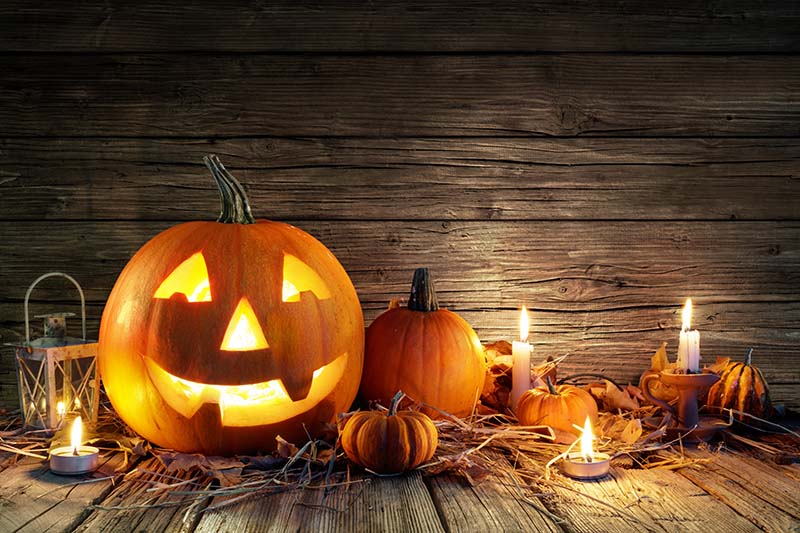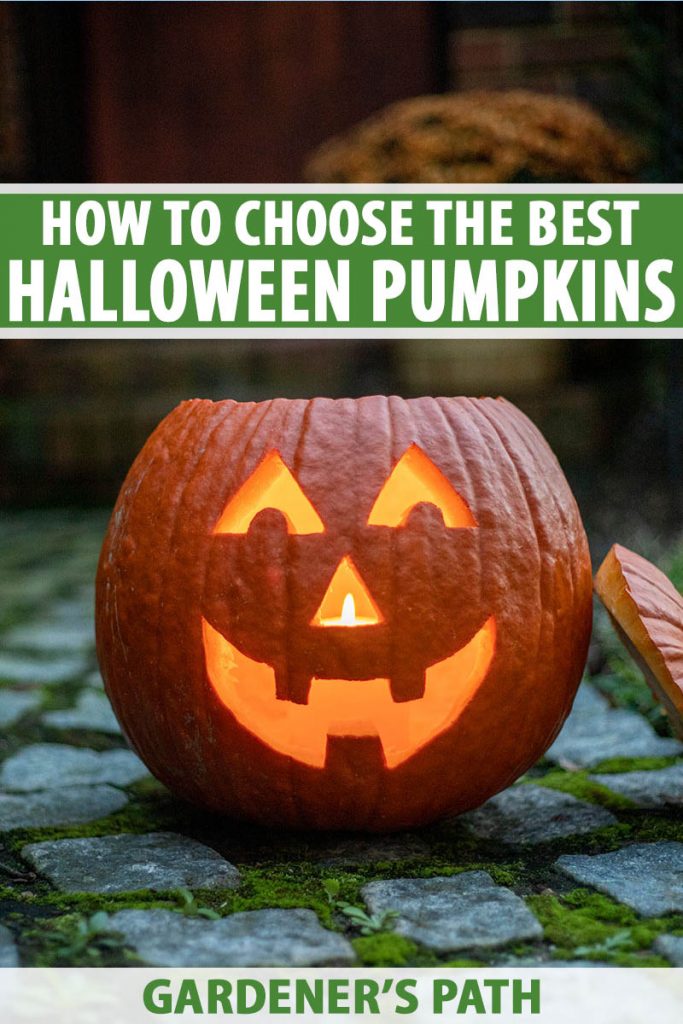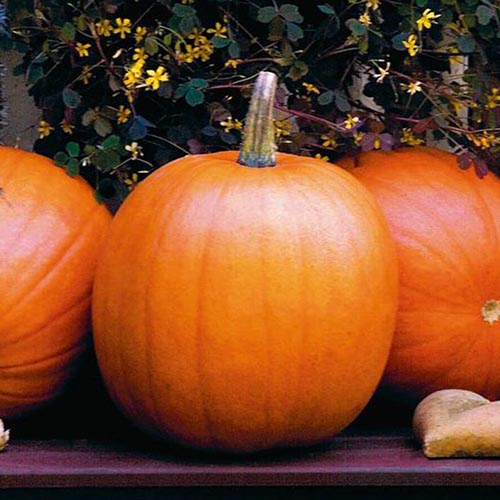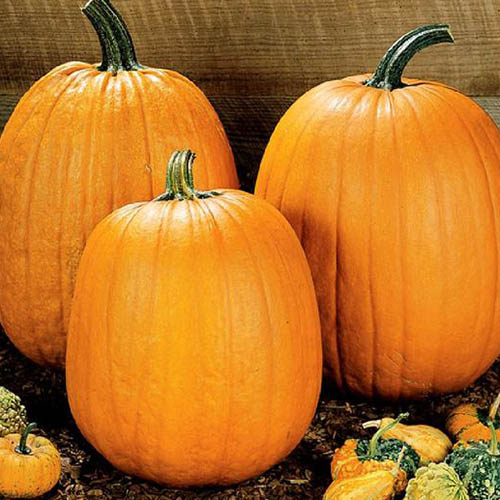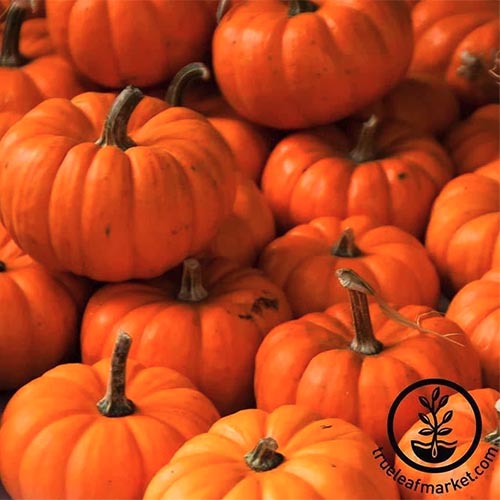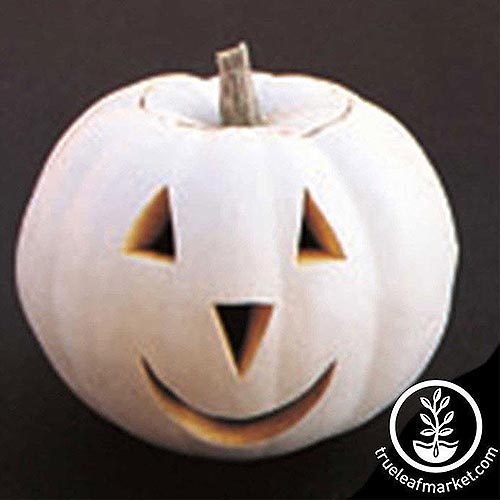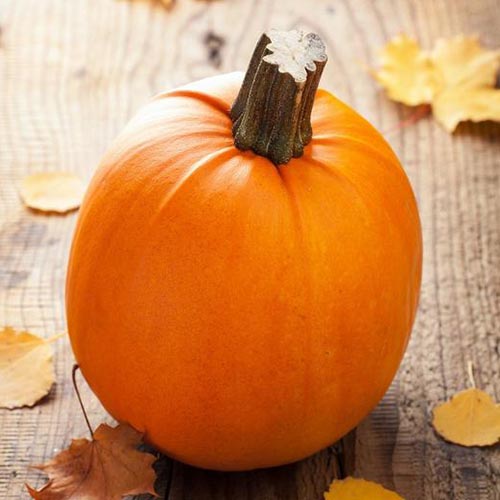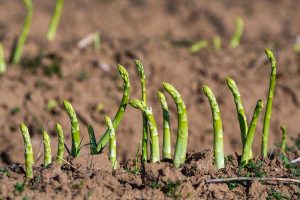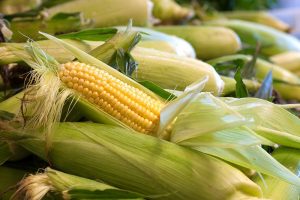Is there anything more autumnal than walking into your garden, the scent of turning leaves in the air, to pick a pumpkin for Halloween?
I think not. And that’s why, this year, I decided to grow three different cultivars in my garden.
For some reason, I figured that since pumpkins (a variety of Cucurbita pepo or winter squash) abound in crisp fall stories and films, they’d naturally grow well in colder climates.
Not quite so. While you can grow these veggies as annuals in any Zone from 3-10, they have a long growing season. A germinated seedling will produce huge, deliciously orange fruit… in a whopping 100+ days.
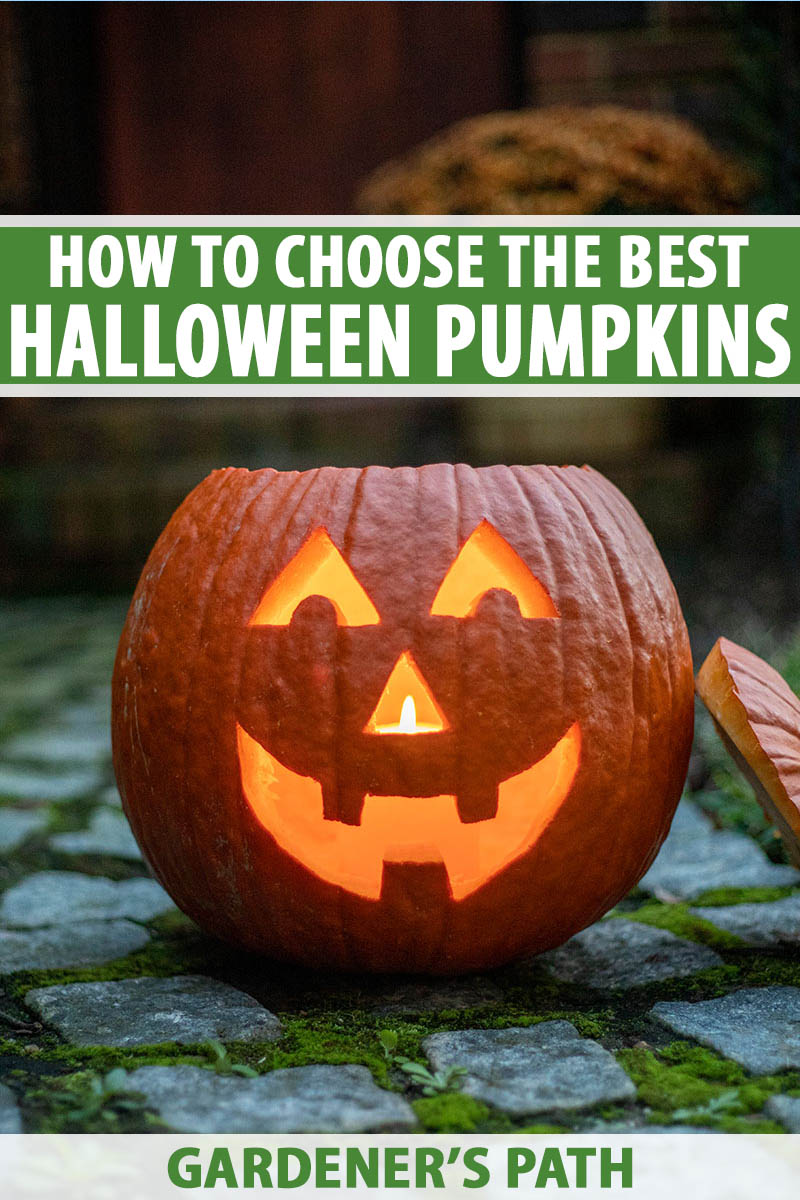
We link to vendors to help you find relevant products. If you buy from one of our links, we may earn a commission.
That’s at least three months, often four, of frost-free growing time the plant needs. A light frost can kill the vines that support the fruit. While this won’t kill them, they won’t ripen anymore after a vine-killing frost.
In northerly climes like mine up in Alaska, we get maybe two and a half solid months of summer. By early September, the first frost looms.
But harvested C. pepo can last for two to three months off the vine if they’re healthy. As long as you get your seedlings going in time, you can enjoy homegrown Halloween pumpkins.

In this article, you’ll learn how to pick the perfect Halloween pumpkin to plant – and we’ll reveal our favorite varieties, too.
Let’s get growing!
What You’ll Learn
When to Plant for Halloween
Let’s get down to the nitty-gritty of when you should plant seeds to be ready for picking in the two months or so before Halloween.
Those of us in northerly climes – USDA Hardiness Zones 3-6 – should start seeds indoors in early April. The ground isn’t likely to be warm enough (60°F) for direct sowing at this time, but we can get a head start on our short growing season by sowing indoors.
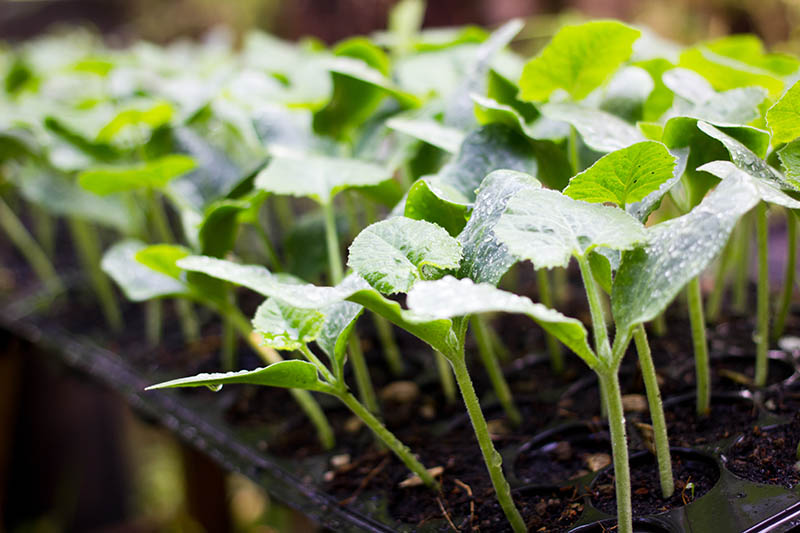
In warmer climates (Zones 7-9), plant seeds directly in the soil once it hits 60°F.
This will usually be around March, April, or early May. Remember that raised beds warm up a little faster than the earth, so if you’ve got a raised bed garden, you’re in luck.
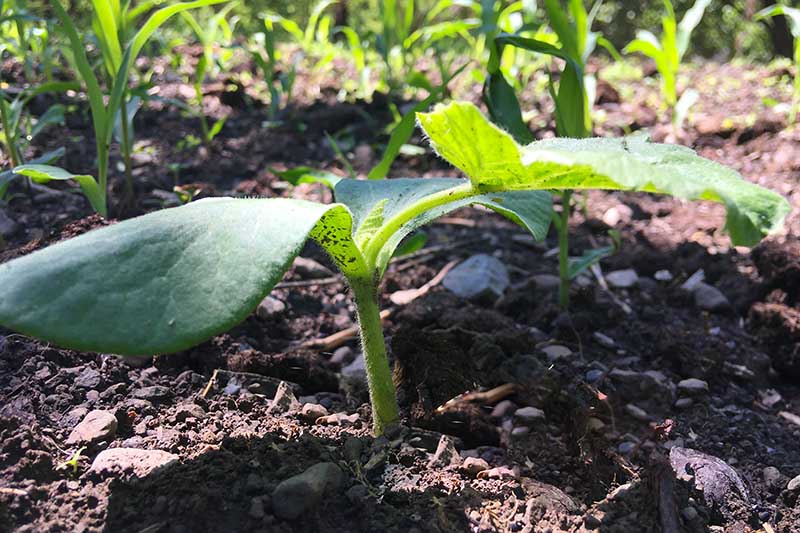
In Zones 10 and 11, you’ll have to either plant your seeds in March for a June harvest, or sow seeds indoors in July and set the seedlings out in August for a perfectly timed October harvest.
Keep in mind that all of these recommendations are general guidelines, and you should always check your seed packets and keep average times to maturity for the cultivars you have selected in mind as well.
For more information on calculating the length of your local growing season, see our guide to planting seeds indoors versus direct sowing.
The Best Halloween Pumpkins
When you think of carving jack-o’-lanterns for Halloween, what type of pumpkin do you imagine? What if you just want to use the winter squash as is, as decorations for your front porch, or if you want to be able to eat it as well?
Here are a few of the top uses for these beloved squash at Halloween time – along with the best cultivars to suit your needs.
Carving
To carve the best jack-o’-lantern of all time, you’ll need a big fruit (yup, it’s a fruit!) with plenty of room on its shell for artistic creativity.
This spooky, flickering decoration originated in Ireland, where people carved the faces of potatoes and turnips instead of winter squash.
I apologize in advance for the utter creepiness of this turnip jack-o’-lantern from the 1900s.

It’s kind of neat, but pumpkins are definitely easier to carve, with more room inside for a candle.
So, are you ready to plant the perfect carving pumpkin? Because I have one for you.
It’s called – drumroll please – the ‘Jack O’Lantern!’
Jack O’Lantern
This perfect carving squash grows to a big but not overwhelming size of 10-20 pounds and matures to a rich orange color in 105 days.
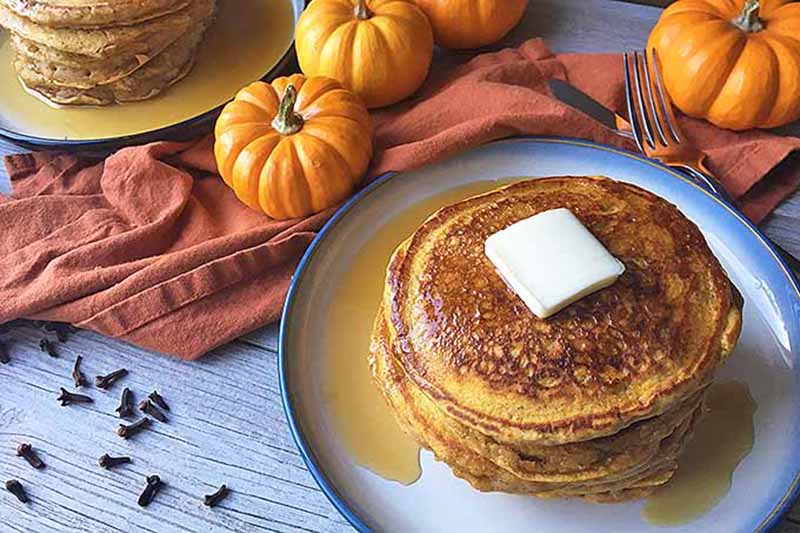
And perhaps the best thing about it is that you can scoop out the flesh and bake it into pie, if that’s your favorite fall dish, or muffins, which are mine.
Or, try these amazing pumpkin spice pancakes from our sister site, Foodal, which taste like autumnal heaven when eaten with pure maple syrup and lightly toasted pecans.
Find ‘Jack O’Lantern’ seeds today available at Eden Brothers.
For those who want to enter into a carving competition, there’s another ideal cultivar: the ‘Howden.’
Howden
I happen to be growing this one at home this year.
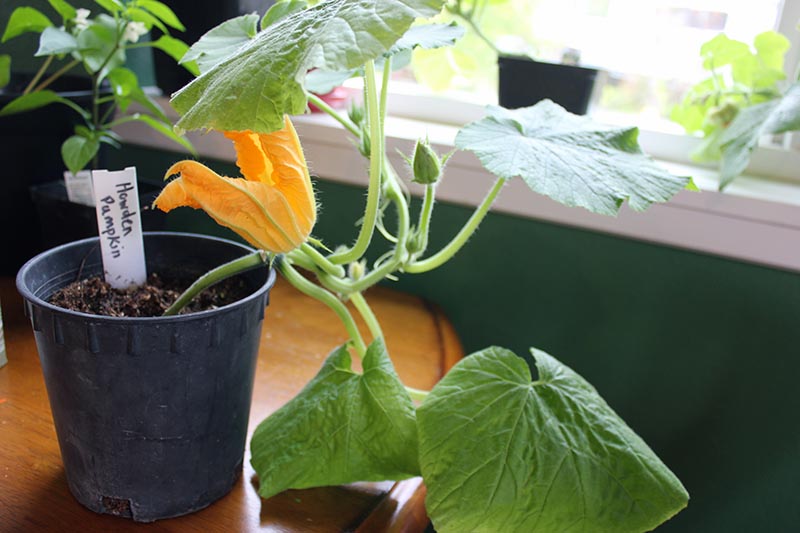
It obviously has a ways to go before it’s ready for Halloween, but I cannot wait to go into the garden with my son and harvest a massive, homegrown pumpkin to carve together.
‘Howden’ has a more elongated look than ‘Jack O’Lantern,’ and it’s heavier, too, weighing up to 25 pounds. It takes a little longer to mature – 115 days – but the wait is worth it.
Incidentally, ‘Howden’ boasts a strong, thick, orange rind with a sweet meaty inside that you can use in baking, so it’s another wonderful dual-purpose pumpkin.
Even better? It keeps well in storage once you’ve harvested (but before you cut into it).
Find ‘Howden’ seeds at Eden Brothers.
Decoration
Want to grow pumpkins for decoration, to create beautiful tablescapes or add a harvest feel to your front porch? Don’t buy the overpriced ones from the grocery store – you can grow your own instead.
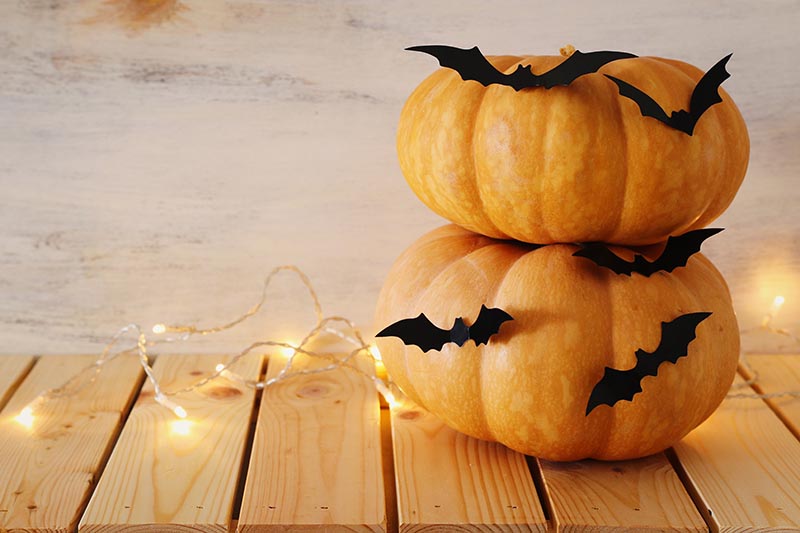
Here are my two favorite cultivars for long-lasting Halloween decoration that you can probably use through Thanksgiving, too!
Jack Be Little
Since I always love to decorate my home every autumn – both indoors and out – with little pumpkins, I decided to grow my own ‘Jack Be Little’ pumpkins this year.
These beautifully ribbed gourds grow to be about two inches tall and three inches wide. They mature in just 95 days.
My ‘Jack Be Little’ plant already has a tiny squash growing, and my son and I love watching it get bigger every day.

It’ll be perfect for a pretty dining-table centerpiece.
And each ‘Jack Be Little’ plant produces four to six pumpkins, so if you plant several, you’ll be set for the fall season.
They’re technically edible, but they’re so tiny you’re better off planting ‘Howden’ or another larger variety for the copious amount of flesh inside.
You can find ‘Jack Be Little’ seeds at True Leaf Market.
Lumina
For a ghostly pumpkin that brings to mind a plump harvest moon, choose ‘Lumina,’ a white variety that grows to 10 or 15 pounds.
‘Lumina’ can also make a nice, medium-sized carving pumpkin of an unusual color.
Despite the white exterior, the flesh is orange. As an added bonus, that flesh can go straight into a tasty curry, like this one from our sister site, Foodal.
Like ‘Jack Be Little,’ it matures in just 95 days. Plant them together and you’ll have two gorgeous gourds to decorate your home.
Get your seeds today from True Leaf Market.
Painting
If you’d rather not carve into your pumpkin but still want to decorate it, why not paint a face or a festive fall scene on the orange beauty?

This is a perfect activity for kids, especially younger ones who aren’t quite ready to wield knives.
Plus, the decorations will last much longer than a carved squash will. (For more tips to make your carved jack-o’-lanterns last, give this article a read.)
Here are two perfect, medium-sized winter squashes to plant and paint:
Small Sugar
At 10 inches in diameter, smooth, round ‘Small Sugar’ is bigger than ‘Jack Be Little,’ but small enough for the kids (or you) to work with and paint.
Of course, if you’d rather bake ‘Small Sugar’ into a pie, that’s fine too. This particular cultivar has been a pie staple for over 120 years!
It weighs anywhere from 5-8 pounds upon maturity, and reaches a harvestable size in 100 days.
Get your seeds today at Eden Brothers.
Casper
For a large squash that offers itself as an easy canvas for any painter – it’s white as paper – try ‘Casper,’ a 15-pound beauty that matures in 115 days.
The shell is smooth, providing the perfect surface for your artwork, and the flesh is sweet, making eating it very easy.
Get your ‘Casper’ seeds from Eden Brothers today.
A Few Tips
Your pumpkin is ready for carving when you knock on the shell and it sounds hollow inside.
Cut the vine with a knife, leaving at least four inches of stem, but don’t use the stem as a handle: carry the big old thing by grasping it around the bottom. If you break the stem off, the fruit will decay within 3-5 days.
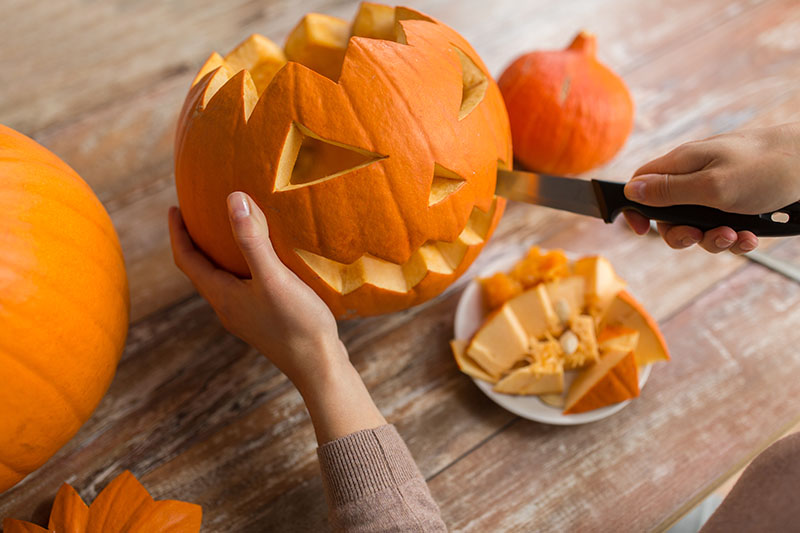
When you’re picking one to carve or use as decoration, make sure it doesn’t have any nicks or soft, rotten spots.
This helps ensure that it will last for two to three months until you carve it – or until the festive season is over.
Keep it away from wet, humid conditions, too, as they can invite fungus and rot, making your carefully cultivated squash go bad more quickly.
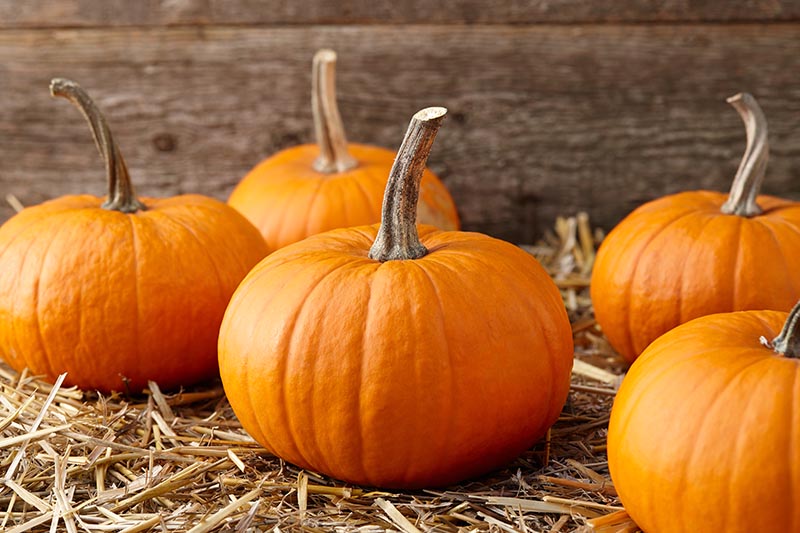
Once you cut into it, you have those 3-5 days to enjoy it before it curls into itself and starts to rot.
So don’t do any carving until about three days before Halloween max if you want to display your jack-o’-lanterns on that spooky night.
A Hallowed Delight
Truly, there’s nothing better than harvesting your own homegrown pumpkins to enjoy as part of your Halloween festivities.
If you grow several different varieties, you can paint a few, carve a couple, and use the rest for decoration, pies, and other tasty fall treats.
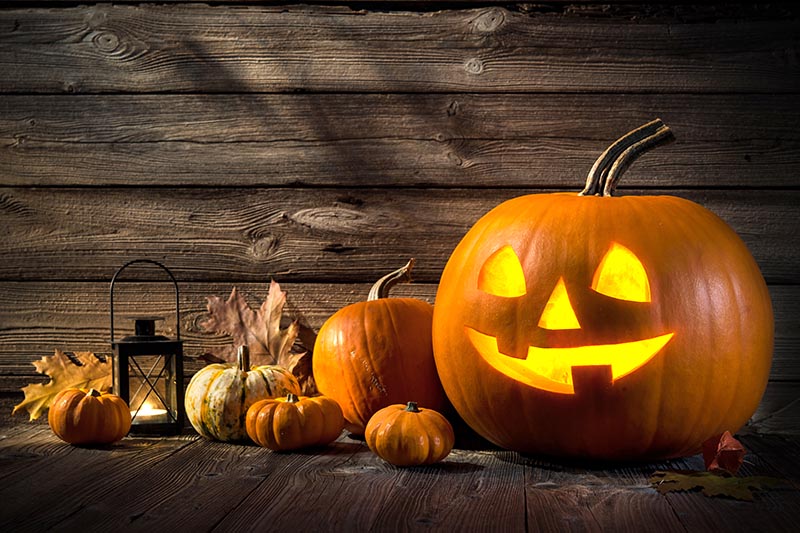
So get those seeds in the ground, and show us all your plump squashes come October! Please feel free to share your photos in the comments.
And don’t forget to check out these articles on growing ornamental and edible Cucurbits next:
- 7 of the Best Ornamental Gourd Varieties
- How to Plant and Grow Ornamental Hardshell Gourds
- The Complete Guide to Growing Winter Squash
- 11 of the Best Winter Squash Varieties
Photos by Felicia Lim, Laura Melchor, and Nikki Cervone © Ask the Experts, LLC. ALL RIGHTS RESERVED. See our TOS for more details. Product photos via Eden Brothers and True Leaf Market. Uncredited photos: Shutterstock.
